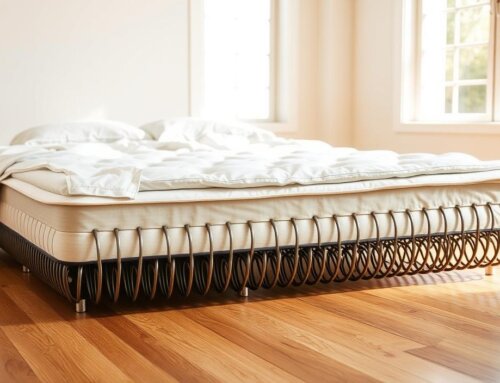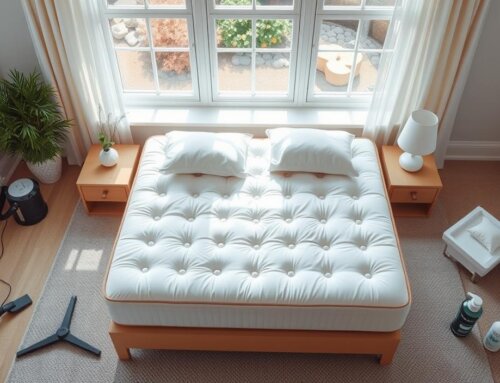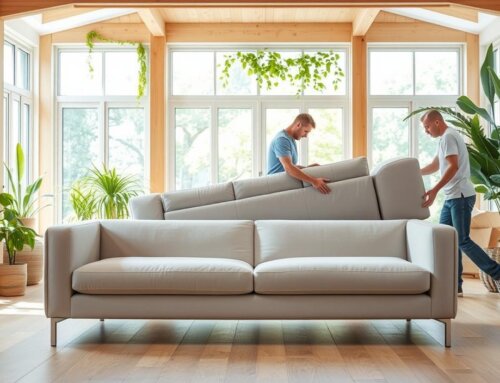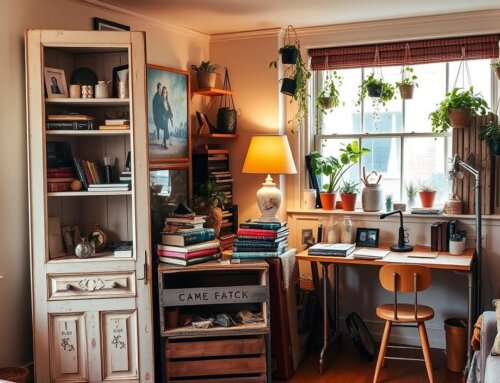When London businesses move offices, old office furniture – desks, chairs, storage units, big items – has to go. Disposing of or repurposing these properly involves understanding the costs, environmental sustainability and regulations around office furniture removal.
Understanding the costs, including any additional cost for transportation or special handling, is crucial. In this guide we’ll cover tips for eco disposal, what to expect to pay and how your business can reduce its environmental impact and save money.
Why Office Furniture Removal Matters
When it’s time to say goodbye to old or unused office furniture, understanding the environmental impact is key. Old furniture disposal contributes to waste, items end up in landfills.
In London where sustainability is becoming more important, responsible disposal practices can make a positive impact on society, closing the gap between waste and sustainability.
Greenwashing in corporate sustainability reporting is a special issue that businesses need to be aware of. Disposing of old furniture thoughtfully reduces landfill waste, conserves resources and supports local communities through donation.
Beyond being good for the environment, proper disposal and reuse of furniture can also enhance a business’s image, show clients and employees that the company cares about sustainability.
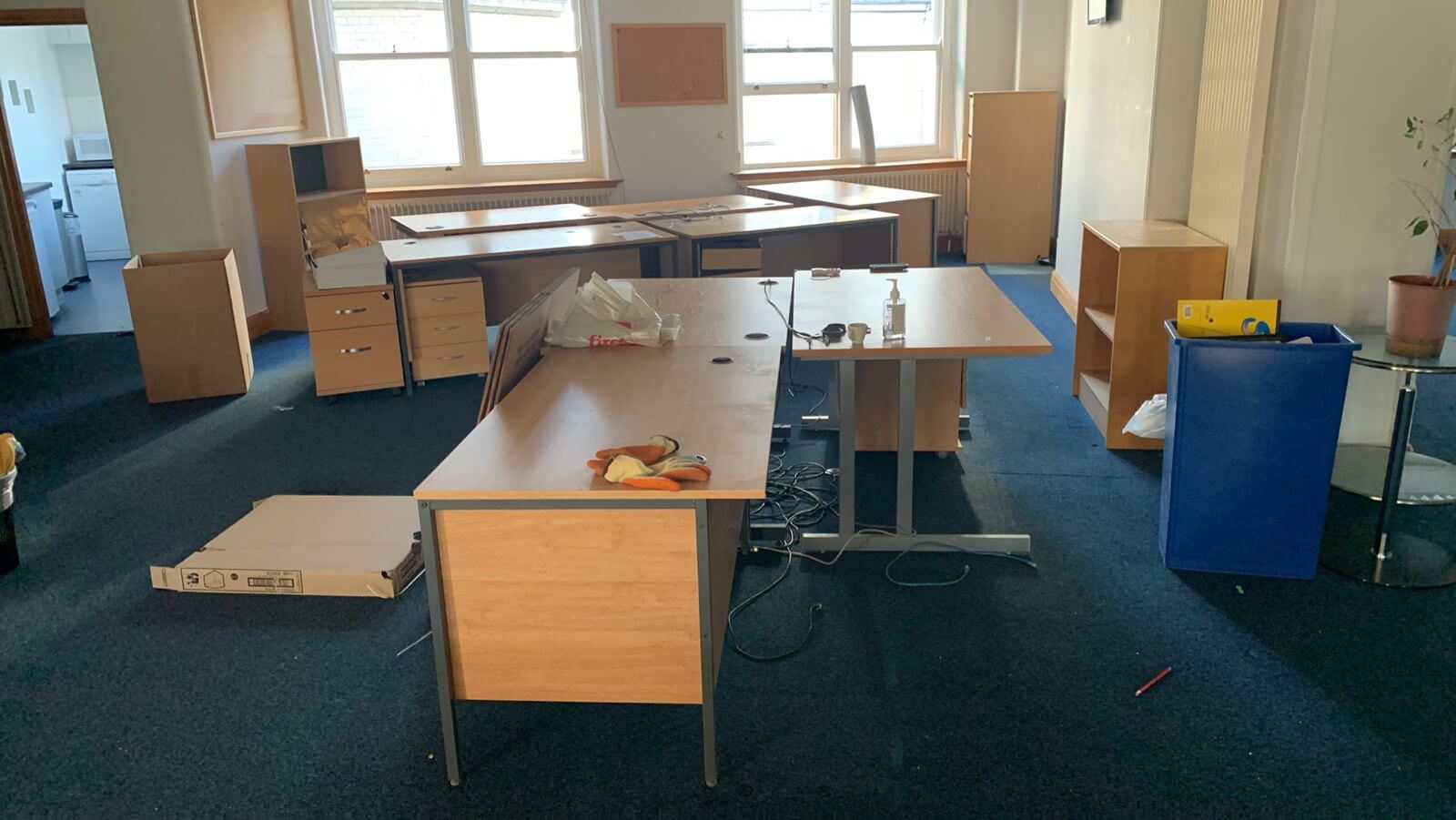
Preparing for Office Furniture Removal
Preparing for office furniture removal involves several steps to ensure a smooth and efficient process. Here are some tips to help you prepare:
- Create a Plan: Start by creating a detailed plan for the removal process. This should include the date and time of the removal, as well as the logistics involved. Having a clear plan will help you stay organized and ensure that everything goes smoothly.
- Sort and Categorize: Go through all the furniture in your office and sort it into different categories. Decide which items you want to keep, which can be donated, and which need to be disposed of. This will make the removal process more efficient and help you make informed decisions about each piece of furniture.
- Measure the Furniture: Measure the dimensions of the furniture to ensure that it can be removed safely and efficiently. This is especially important for bulky items that may require special handling or disassembly.
- Clear the Area: Make sure the area around the furniture is clear of obstacles and tripping hazards. This will make it easier for the removal team to move the furniture and reduce the risk of accidents.
- Label the Furniture: Label each piece of furniture with its destination. Clearly mark items that are to be kept, donated, or disposed of. This will help the removal team know exactly what to do with each item and prevent any mix-ups.
By following these steps, you can ensure a smooth and efficient office furniture removal process, minimizing disruptions and reducing the overall cost.
Your Options for Office Furniture Removal
There are many ways to dispose of old office furniture in London, each with its pros and cons:
- Donating to Charities
Many charities and community groups in London accept furniture donations, which benefits both parties. By donating you support local communities and furniture gets reused. Some charities even offer collection services so your business doesn’t have to lift a finger to move bulky items. - Selling or Repurposing
If the furniture is in good condition consider selling it to other businesses or through second-hand marketplaces. Repurposing some items internally is also an option, some items can be transformed or upgraded for continued use. - Recycling and Specialized Disposal Services
For items that can’t be reused or sold, recycling is the way to go. Specialized furniture disposal services in London offer recycling for materials like metal, wood and plastic. Recycling means parts are reused not added to landfill waste. - Local Council Waste Collection
Your local council may offer furniture collection for bulky items. However council collections often require advance booking, specific times and can incur extra costs.
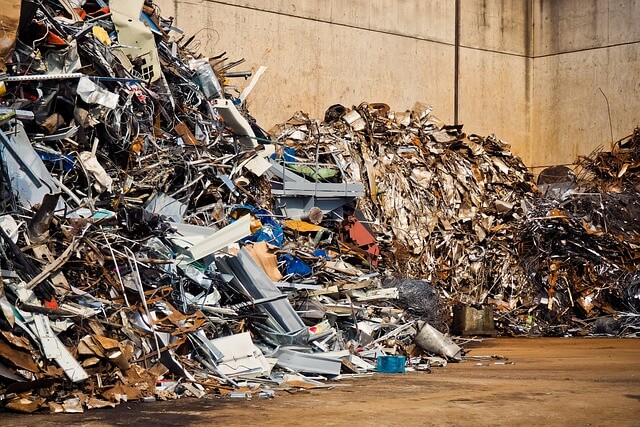
Prices affect
The cost of office furniture removal in London will depend on several factors including the quantity, size and condition of the items and any extra costs like labour, transport and recycling fees. Here are some costs to consider:
- Size and Weight of Items
Bulky items like large desks, storage units and conference tables will increase disposal costs. Heavily upholstered chairs or items with complex structures will require extra handling. - Volume of Items
Large amounts of furniture will cost more to remove. Bulk discounts may be available from some disposal companies so it’s worth asking about pricing. - Special Handling Requirements
Some items like old electronics may require special handling and disposal. For example an old monitor or electronic device must be disposed of according to e-waste regulations. These items will cost extra. - Urgency and Scheduling
Urgent disposal will cost more. Booking ahead and scheduling disposal during off-peak times can save your business money. - Local Council Fees
Local councils may charge for bulky item collection, costs and policies vary by borough. Contact your local council directly to find out about collection dates, fees and services.
Environmental Sustainability in Office Furniture Removal
Sustainability is top of mind for London businesses today. From reducing waste to being greener, the environmental impact of furniture disposal is huge.
By choosing eco-friendly disposal methods businesses can be part of sustainable development and help London’s environment.
- Reducing Landfill Waste
By not sending to landfill and choosing to recycle or donate businesses can reduce the amount of waste generated. Landfill produces methane, a potent greenhouse gas which has long term effects on air quality and climate change. - Conserving Resources Through Recycling
Recycling saves resources by reusing materials like metal, wood and plastic which would otherwise have to be produced new. This conserves resources and reduces demand for new materials. - Supporting Circular Economy
Sustainable disposal practices support a circular economy where items are reused or recycled not discarded. This reduces waste and keeps materials in the supply chain, ultimately good for the environment.
Disposal and Donation Options
There are several disposal and donation options available for old office furniture, each with its own benefits and considerations:
- Local Council Collection: Many local councils in London offer bulk waste collection services for large items like office furniture. This can be a convenient option, but be sure to check the specific dates, fees, and services offered by your local council to avoid any additional costs.
- Charity Donation: Donating gently used office furniture to local charities or non-profit organizations is a great way to support the community and promote sustainability. Many charities offer collection services, making it easy to donate bulky items without much hassle.
- Recycling Centers: Many recycling centers accept office furniture and will recycle or dispose of it in an environmentally responsible manner. This option helps reduce landfill waste and supports sustainable development by conserving resources.
- Furniture Disposal Services: Specialized furniture disposal services can collect and dispose of office furniture in a sustainable and environmentally friendly way. These services often include recycling and repurposing options, ensuring that your old furniture has minimal environmental impact.
- Auction Houses: Consider selling your used office furniture through an auction house or online marketplace. This can be a good way to recoup some of the costs and ensure that the furniture is reused rather than discarded.
When choosing a disposal or donation option, consider the environmental impacts and sustainability of the method. Look for options that prioritize recycling and reuse, and avoid methods that contribute to waste and pollution.

In addition to these options, consider the following tips to reduce waste and promote sustainability:
- Reuse and Repurpose: Instead of disposing of old furniture, consider reusing or repurposing it within your office. This can save money and reduce waste.
- Buy Sustainable: When purchasing new furniture, look for sustainable and environmentally friendly options. Choose durable, long-lasting pieces that will reduce the need for frequent replacements.
- Reduce Waste: Implement practices in your office to reduce waste, such as setting up a recycling program for daily office waste and avoiding single-use furniture.
By following these tips and considering the environmental impacts of your disposal and donation options, you can promote sustainability and reduce waste in your office furniture removal process.
Choosing a Responsible Office Furniture Removal Company
Choosing the right office furniture removal company is key to a stress free experience and to ensure disposal is done responsibly. Here’s what to look for in a removal company:
- Eco-Friendly Policies
Look for companies that actively promote recycling and sustainable disposal. Many good removal companies work closely with recycling facilities to reduce environmental impact. - Clear Pricing and Policies
Ensure the company provides detailed quotes, all costs upfront, including extra charges for bulky items or special handling. Avoid companies with unclear pricing to prevent surprise costs. - Range of Services
A good removal company will offer a full service, collection, transport and disposal, so all aspects are covered. Some may also offer inventory services, to help you decide what to keep, donate or dispose of. - Good Reputation and Reviews
A company with good reviews and a good reputation will provide better service. Research their experience with office furniture removals in London and any environmental policies they have.
How to Make the Removal Process Easier
To make the removal process stress free follow these steps:
- Take Inventory
Before you book a removal service, identify and list the furniture you need to dispose of. Decide what can be donated, reused or recycled. - Set a Date
Book the disposal date well in advance to avoid extra costs. Check the dates with your local council for bulk item collection if you’re going that route. - Contact Removal Companies Early
Research and contact companies that are sustainable and transparent. Get quotes from multiple companies to find the best price. - Inform Staff
If applicable, inform staff about the removal plan as they may need to clear personal items from desks or storage units. - Other Sustainable Actions
Use this opportunity to look at other sustainable initiatives in your office, such as reducing waste or setting up a recycling program for daily office waste.
Office Furniture Disposal in London in a Nutshell
Office furniture removal doesn’t have to be a pain or bad for the environment. By planning ahead, choosing eco-friendly services and understanding the costs involved London businesses can make their disposal sustainable. It’s extra effort that’s good for the environment and good for your business and reputation.
Your decision today will impact your company’s sustainability and social responsibility. Just remember, with the right company you’ll reduce the environmental impact and stress.

